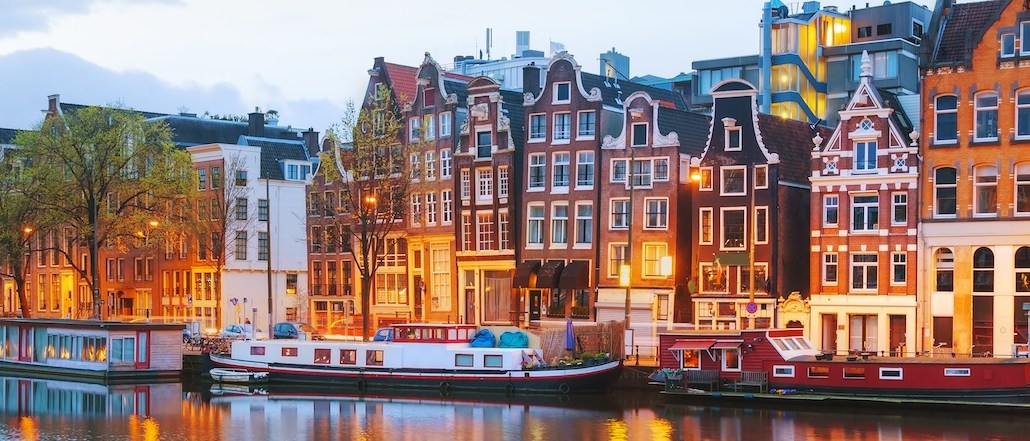Save 50% on a 3-month Digiday+ membership. Ends Dec 12.

This is Global Creative, a series by Digiday that highlights the nuances of advertising scenes in different parts of the world through the eyes of a local creative.
The Netherlands is home to some of the biggest global brands including KLM, Unilever and Heineken — and a thriving global ad creative scene, with outposts of agencies including Wieden + Kennedy, 180 and DDB.
While the Dutch advertising industry has been known for its technological sophistication, particularly in the realms of graphics, design and video since the ’90s, digital has also truly matured and is no longer considered just a specialization, according to Sandra Soskic, co-CEO at DDB & Tribal Worldwide, Amsterdam.
Here’s a deeper look at the nuances of the Dutch advertising landscape:
The client is king
Like other markets, Dutch marketers are too moving away from the “agency of record” model to a “project” model, where the client is in charge and brings in multiple partners to solve specific advertising problems, according to Soskic. This shift has been accompanied by a change in perceptions and budgets, with clients valuing execution and production more than strategy and concept. “It’s like the Hollywood producer model; clients don’t always consider agencies as strategic partners,” she said.
Agencies are coping by rethinking how they bill clients for ideas and add value, said Bram Holzapfel, creative director at DDB & Tribal Worldwide, Amsterdam. “Sometimes it feels unfair, since it’s a new system that’s still crystallizing,” he said. “But we’re trying to roll with it and preempt the shift.”
Digital plays a growing role
Digital used to be an afterthought, but it’s now at the core of Dutch advertising. Clients are relying on digital not just for communications but also as a true driver of business transformation.
“There is an increasing focus on data, precision marketing and programmatic, which is indicative of a broader shift where clients want a more one-on-one marketing approach rather than mass marketing,” said Soskic.
An example of this approach is KLM’s #HappyToHelp campaign from 2014, which monitored Twitter to help identify travelers’ problems.
Local meets global
Even in a dynamic advertising landscape like that of the Netherlands, there is a clear division between agencies that specialize in international clients and those that focus on the local market. While the likes of Wieden + Kennedy and DDB & Tribal Worldwide, Amsterdam cater to international brands and campaigns, others like JWT Amsterdam, TBWA, Ogilvy Amsterdam and Alfred are more geared toward local marketing.
“What unites them is humor,” said Holzapfel. “While quirky Dutch humor works for the local brands, broader, universal humor translates well internationally.”
This campaign for Dutch insurer Centraal Beheer, for example, takes a dig at technology, using subtle humor to show how even “smart homes” are not immune to plunder.
Another example is this campaign by Dutch services provider Telfort, which shows how an ex-millionaire hit hard by the financial crisis makes a comeback after turning to Telfort for mobile calls and Internet.
“One big cultural village”
Amsterdam’s history, culture and ingenuity make it an international hotspot not only for advertising but other creative industries including fashion, design and tech. All this attracts a diverse, international talent pool to the city, making it a breeding ground for creativity. Creatives there get access to global brands plus work-life balance. A great educational system, which provides access to multi-skilled talent, international company headquarters and a large startup scene across industries also help attract talent.
“Everyone speaks English, so everyone feels at home,” said Holzapfel. “There is a great ecosystem of specialist creative industry suppliers. It is one big cultural village.”
Homepage image via Shutterstock.
More in Marketing

In Graphic Detail: Here’s what the creator economy is expected to look like in 2026
Digiday has charted its expected revenue, key platforms for creator content as well as what types of creators brands want to work with.

Ulta, Best Buy and Adidas dominate AI holiday shopping mentions
The brands that are seeing the biggest boost from this shift in consumer behavior are some of the biggest retailers.

Future of Marketing Briefing: AI confuses marketers but their own uncertainty runs deeper
That was the undercurrent at this week’s Digiday Programmatic Marketing Summit in New Orleans.





